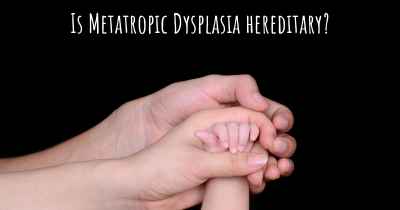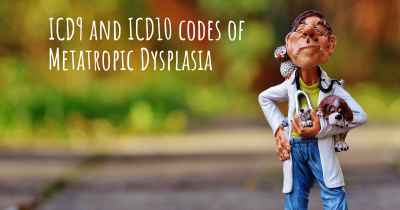1
Which are the symptoms of Metatropic Dysplasia?
See the worst symptoms of affected by Metatropic Dysplasia here

Metatropic dysplasia is a rare genetic disorder that affects skeletal development. It is characterized by abnormal bone growth and can lead to various physical abnormalities. The symptoms of metatropic dysplasia can vary in severity and may become more pronounced as a child grows.
One of the most noticeable symptoms of metatropic dysplasia is short stature. Children with this condition tend to be significantly shorter than their peers and may have a disproportionate body size. The short stature is often evident from early childhood and continues into adulthood.
Another prominent symptom is a distinctive facial appearance. Individuals with metatropic dysplasia may have a prominent forehead, a flat nasal bridge, and a small chin. Their facial features may appear coarse or distorted. Additionally, they may have a cleft palate or a high-arched palate, which can affect speech and eating.
Metatropic dysplasia also affects the spine, leading to spinal abnormalities. The most common spinal abnormality associated with this condition is kyphoscoliosis, which is an abnormal curvature of the spine in both the sideways and forward-backward directions. This can cause back pain, difficulty breathing, and limited mobility.
Joint stiffness and limited range of motion are common symptoms of metatropic dysplasia. The joints, particularly in the spine, hips, and knees, may be stiff and less flexible than normal. This can make it challenging for individuals to move freely and perform daily activities.
In addition to skeletal abnormalities, metatropic dysplasia can affect other body systems. Some individuals may experience hearing loss or have recurrent ear infections due to abnormalities in the middle ear. Respiratory problems, such as recurrent respiratory infections or breathing difficulties, can also occur.
The severity of symptoms can vary widely among individuals with metatropic dysplasia. Some may have mild symptoms and lead relatively normal lives, while others may experience more severe complications that significantly impact their quality of life. It is important to note that the symptoms may change over time as the individual grows and develops.
Diagnosis of metatropic dysplasia is typically based on clinical evaluation, medical history, and radiographic imaging. Genetic testing may also be conducted to confirm the diagnosis and identify the specific genetic mutation responsible for the condition.
While there is no cure for metatropic dysplasia, treatment focuses on managing the symptoms and improving quality of life. This may involve a multidisciplinary approach, including orthopedic interventions, physical therapy, speech therapy, and hearing aids if necessary. Regular monitoring and follow-up with healthcare professionals are essential to address any complications and provide appropriate support.
In conclusion, metatropic dysplasia is a rare genetic disorder characterized by abnormal bone growth and skeletal abnormalities. The symptoms can include short stature, distinctive facial features, spinal abnormalities, joint stiffness, and limitations in mobility. Other associated symptoms may include hearing loss, respiratory problems, and recurrent infections. Early diagnosis and comprehensive management can help individuals with metatropic dysplasia lead fulfilling lives despite the challenges posed by the condition.
Diseasemaps








